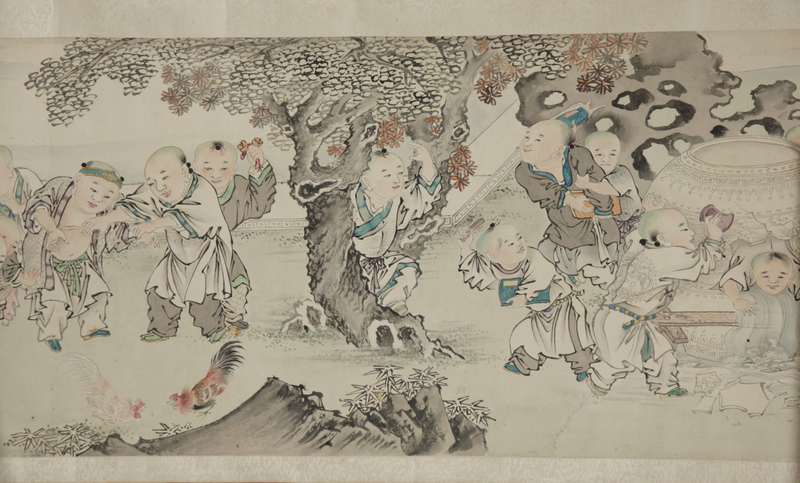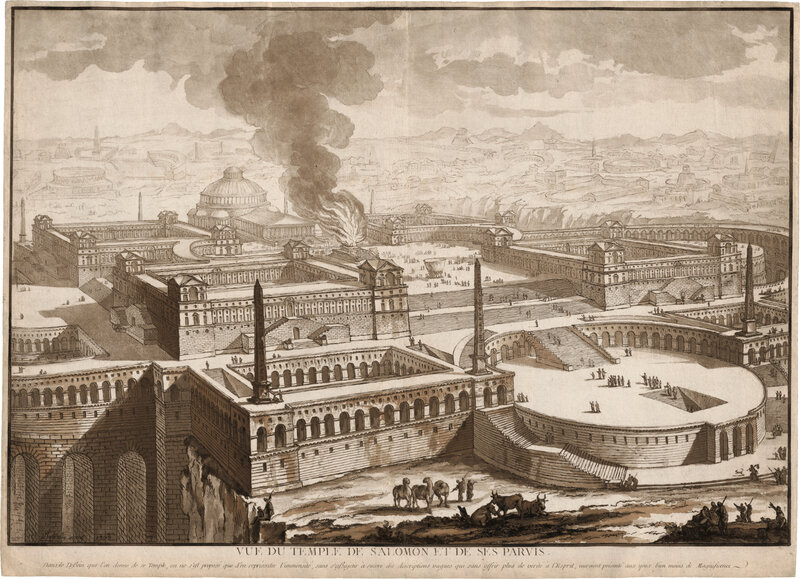Rijksmuseum purchases two Asian scroll paintings at the European Fine Art Fair
Tani Bunchō, copy of Xu Yanghong's One Hundred Children, 1804.
AMSTERDAM.- The Rijksmuseum has acquired a pair of Asian scroll paintings of the very highest quality at the European Fine Art Fair (TEFAF). One is an 18th-century Chinese scroll painting showing one hundred children playing, making music, reading and writing, and the other is a 19th-century Japanese copy. The ‘one hundred children’ theme is well-known in Asian art – it symbolises fertility and the flourishing of the family. This acquisition was made possible by Rituals, sponsor of Asian art at the Rijksmuseum.
Taco Dibbits, director of the Rijksmuseum: What makes these twin paintings exceptional is that they illustrate the transfer of artistic knowledge from China to Japan in a manner that could scarcely be bettered.
The two works demonstrate the importance of copying to East Asian painting, while also testifying to the Chinese influence on the Japanese painting, as a source of inspiration. The Chinese original was made by the professional painter Xu Yanghong; the Japanese copy was made by Tani Buncho, one of the most famous masters of Japanese painting in the late 18th and early 19th centuries. It is most unusual for such a great Japanese master to draw inspiration from a relatively unknown Chinese artist.
Popular subject
‘One hundred children’ was a popular subject in both Chinese and Japanese art. The children are depicted at play, as well as reading, writing, drawing calligraphies and making music. This theme symbolises the desire of parents to have many children, and for their children to be successful in what they do. The two scrolls complement other works on the same theme in our collection. Together this pair represent a painting tradition in East Asia that is quite distinct from its European counterpart, and their acquisition marks a major enhancement of our collection of Japanese and Chinese painting.
Molkenboer
The Rijksmuseum has also been gifted a superb work that was purchased at TEFAF: an 1896 self-portrait by Antoon Hendricus Johannes Molkenboer (1872-1960). In his portrayal of himself as a confident young artist, Molkenboer breaks with the romantic tradition and heralds the arrival of Realists such as Charley Toorop and Dik Ket. Molkenboer studied in Amsterdam at the school for drawing teachers founded by his father, the Rijksnormaalschool voor Teekenonderwijzers. It was the forerunner of the Rijksmuseum’s own drawing school, the Teekenschool, and it was housed in one of the wings of the main building. Molkenboer’s self-portrait was donated to the museum by Helen and Lorenz van der Meij.
Antoon Henricus Johannes Molkenboer, Self-Portrait in the Studio, 1896. Gift of Helen and Lorenz van der Meij.
Temple
In addition, the Rijksmuseum has acquired a large aquatint by Francois-Philippe Charpentier (1734-1817) depicting the Temple of Solomon in Jerusalem. This 1766 print is the only known copy. The aquatint etching technique, which Charpentier was the first to use, produces areas of tone rather than lines, resulting in a watercolour effect. This work was purchased with the support of the Waller Fund. The most superb works acquired over the past ten years thanks to the Waller Fund are currently on display in the Philips Wing of the Rijksmuseum. This print will soon be added to this exhibition.
François-Philippe Charpentier, Temple of Solomon, 1766. Purchased with the support of the Waller Fund.
Indispensable support
The Rijksmuseum connects people, art and history. It safeguards, manages, conserves, restores, researches, processes, compiles, presents and publishes on the national collection of the Netherlands. Gifts and bequests from private individuals, funding organisations, family trusts, foundations, the government and business are essential to these tasks. The Rijksmuseum is grateful for any form of support.

/https%3A%2F%2Fprofilepics.canalblog.com%2Fprofilepics%2F1%2F0%2F100183.jpg)
/https%3A%2F%2Fstorage.canalblog.com%2F03%2F02%2F119589%2F96711876_o.jpg)
/https%3A%2F%2Fstorage.canalblog.com%2F11%2F31%2F119589%2F94773502_o.jpg)
/https%3A%2F%2Fstorage.canalblog.com%2F20%2F83%2F119589%2F94772815_o.jpg)
/https%3A%2F%2Fstorage.canalblog.com%2F26%2F72%2F119589%2F75604929_o.jpg)
/https%3A%2F%2Fstorage.canalblog.com%2F59%2F60%2F119589%2F26458628_o.jpg)





/image%2F1371349%2F20240426%2Fob_dcd32f_telechargement-32.jpg)
/image%2F1371349%2F20240426%2Fob_0d4ec9_telechargement-27.jpg)
/image%2F1371349%2F20240426%2Fob_fa9acd_telechargement-23.jpg)
/image%2F1371349%2F20240426%2Fob_9bd94f_440340918-1658263111610368-58180761217.jpg)